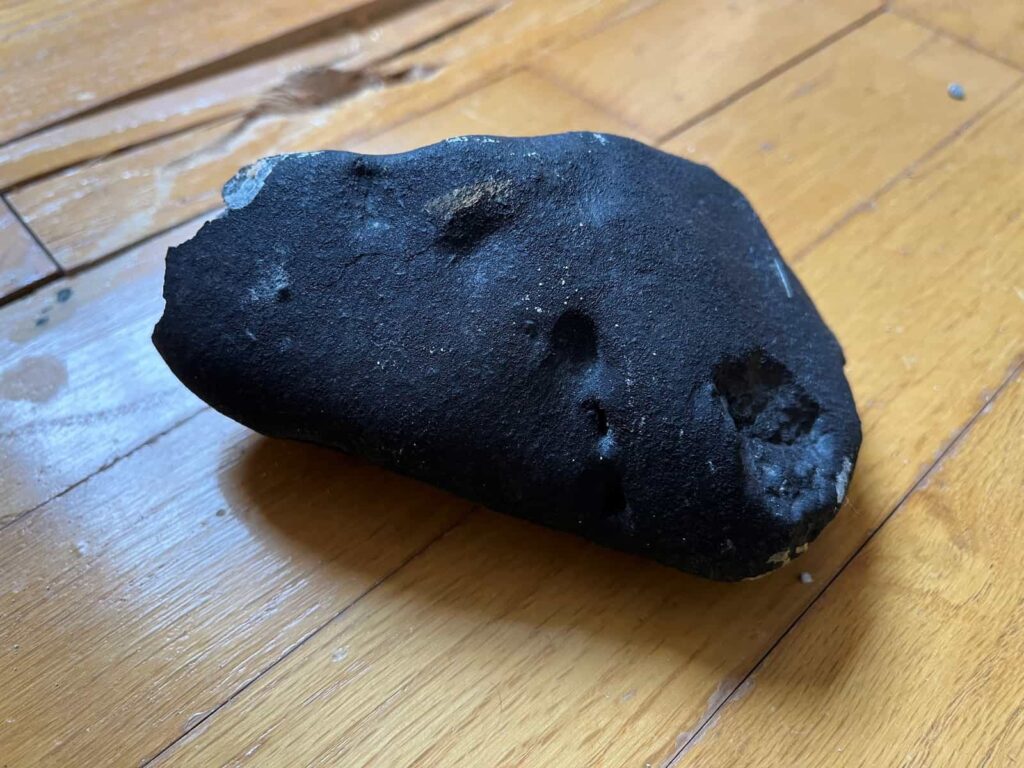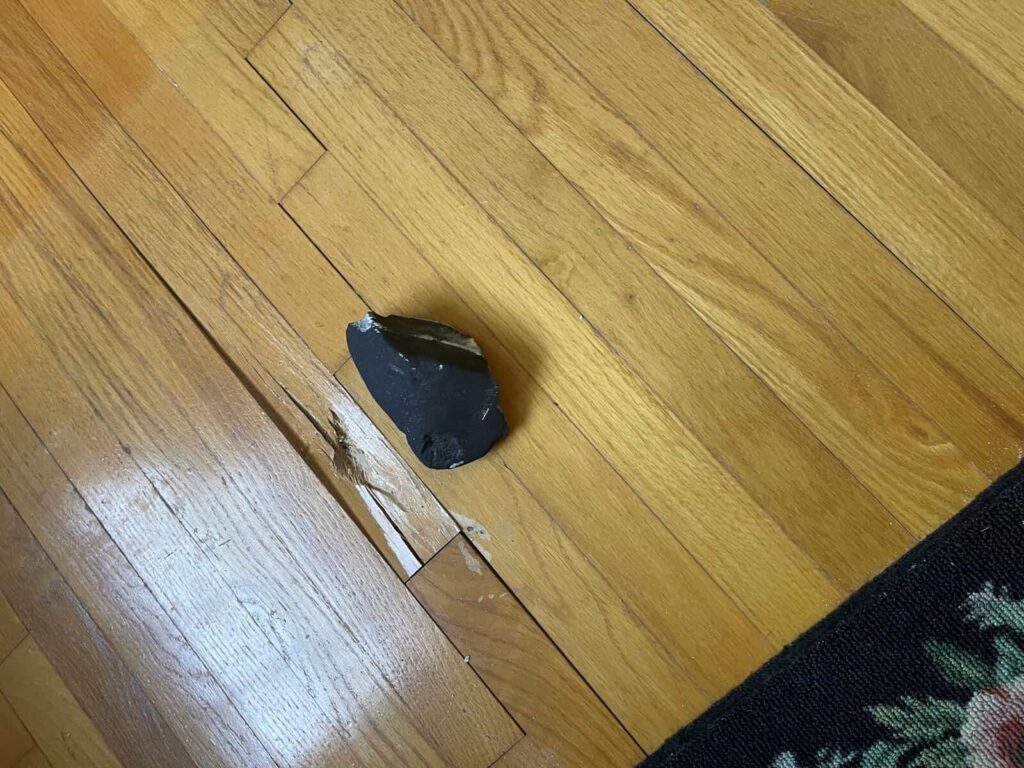Family was home, but no injuries were reported
It’s a story that may not come again until 2061. That is when Halley’s Comet is expected to enter Earth’s solar system again after May 27.
A possible meteorite from remnants of Halley’s Comet may have crashed through the roof of a house on Old Washington Crossing-Pennington Road around 1 p.m. May 8, according to the Hopewell Township Police Department.
The metallic object struck the roof of the one-story house and landed on the floor inside the house, police said. The oblong-shaped object measured about four inches by six inches. The residents were at home, but no one was injured.



Police believe the metallic object may actually be related to the current meteor shower called Eta Aquarid, and reached out to other agencies to help identify it and to safeguard the residents and the object.
The Eta Aquarid meteor shower has been active since April 15 and will remain active through May 27, according to www.space.com. It was expected to peak May 5-6.
A significant outburst is possible, caused by particles ejected from Comet Halley in 390 B.C. (Before Christ), said Bill Cooke of the Meteoroid Environment Office at NASA’s Marshall Space Flight Center in Huntsville, Ala.
The Eta Aquarid meteor shower is categorized as a strong shower, according to www.space.com. The maximum rate for shooting stars in a clear sky is about 50 per hour. The meteors travel across the sky about 41 miles per second.
The shower is caused by ice and dust left behind by Halley’s Comet. When the Earth passes through the comet’s debris, the comet crumbs heat up as they enter the Earth’s atmosphere, according to www.space.com. The result is “shooting stars” that streak across the sky.
Halley’s Comet takes about 76 years to orbit the sun once, and will not enter the solar system again until 2061, according to www.space.com. The comet is named after English astronomer Edmond Halley, who examined reports of comets approaching Earth in 1531, 1607 and 1682.
Halley concluded that the sightings were all of the same comet, which returned over and over again, according to www.space.com. He predicted the comet would return in 1758. He did not live to see it, but the comet was later named in his honor.

